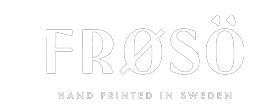Lisbet Jobs
For most people, the name Jobs is synonymous with the richly flowered printed fabrics that have been classics of Swedish textile art since the 1940s. With a love of nature and a sense of color and form, Lisbet Jobs and Gocken Jobs created patterns for textiles that became internationally renowned.

Lisbet Jobs (1909-1961) studied at the Technical School before opening her own ceramic workshop in 1931, where she was one of the first female potters to fire her own work. It was above all the floral decorations that attracted attention. Her sister Gocken (Ingrid) Jobs (1914-1995) also trained at the Technical School and soon joined the workshop. The sisters then followed each other throughout their artistic career.
During the war, the supply of glaze was limited and ceramic work was more sporadic. Astrid Sampe, a fellow student of Lisbet's and head of NK's textile department, suggested that they transfer their floral motifs from ceramics to fabric. This meant that Lisbet and Gocken's artistic career took a new and lasting direction.
Without much effort, they transferred the characteristic floral motifs to the textile surface, where they could spread out in a way that added a new dimension of grandeur. They were in tune with the times, both with their small patterns and with the more monumental floral pieces.

The pattern "Fåglarna" was designed by Lisbet Jobs in 1947 on behalf of Gefle Ångväfveri AB, a company specializing in fabrics for the clothing industry. Jobs Handtryck was responsible for the printing. The pattern has not been in production since then.
Among the more than 30 patterns the sisters designed for Gefle Ångväferi are some of the most beloved patterns with blåbär, raspberries and strawberry flowers.


